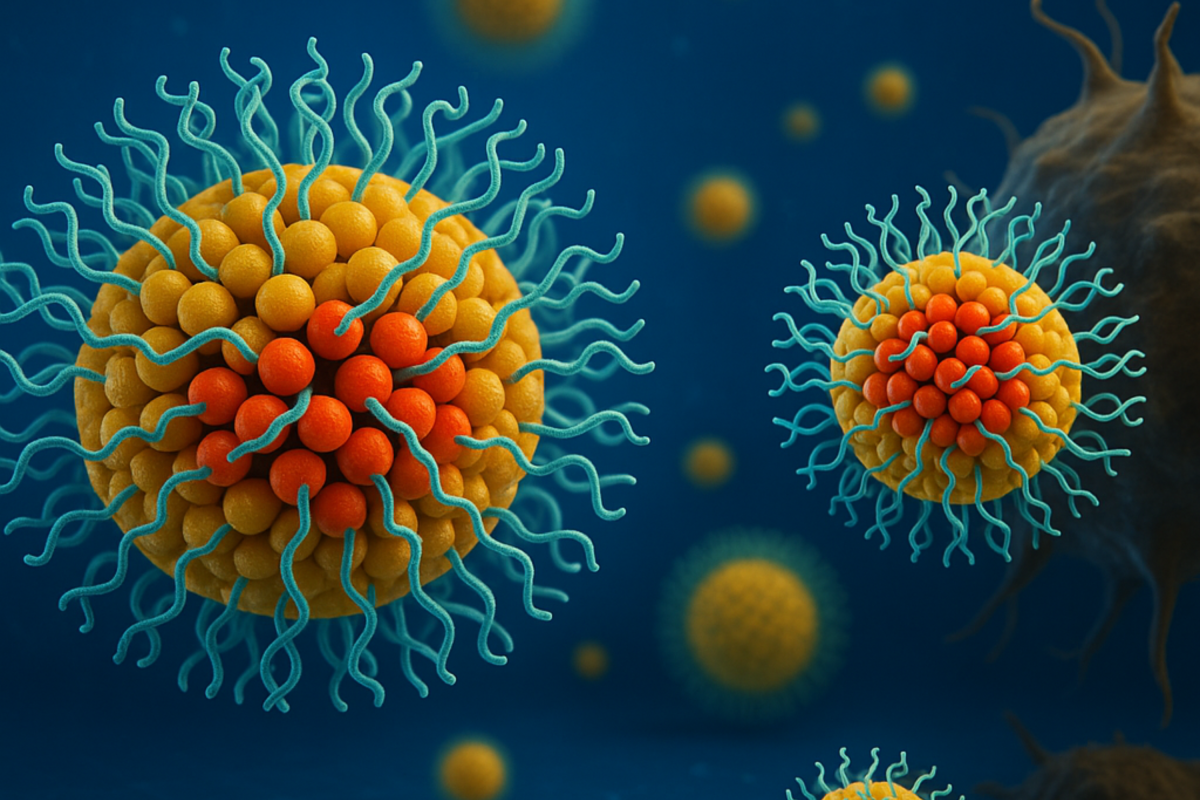Copyright Newsweek

A common cancer drug has been restructured to make its cancer cell killing abilities up to 20,000 times more effective while also reducing its toxicity,. Researchers from the Northwestern University in Illinois re-engineered the structure of the commonly-used chemotherapy drug 5-fluorouracil (5FU) into that of a "spherical nucleic acid" (SNA)—a nanostructure that weaves the drug directly into DNA strands coating tiny spheres. Such makes it far more powerful and targeted—leaving healthy cells unharmed. Testing the nanomedicine in a small animal model of acute myeloid leukemia (AML)—a fast-moving, difficult-to-treat blood cancer expected to affect around 22,010 people and cause 11,090 deaths in the U.S. this year—they compared it to the standard drug. The new drug entered leukemia cells 12.5 times more efficiently, killed them up to 20,000 times more effectively and reduced cancer progression 59-fold. This was all without detectable side effects, according to the researchers. “In animal models, we demonstrated that we can stop tumors in their tracks,” said chemist and nanoscience expert Chad A. Mirkin of Northwestern in a statement. “If this translates to human patients, it’s a really exciting advance. It would mean more effective chemotherapy, better response rates and fewer side effects. That’s always the goal with any sort of cancer treatment.” With seven SNA-based therapies currently in clinical trials, the team says the new approach could lead to potent vaccines and treatments for cancers, infectious diseases, neurodegenerative diseases and autoimmune diseases. For this new study in particular, the researchers focused on the 5FU, which often both fails to reach cancer cells efficiently and attacks healthy tissue—causing side effects like nausea, fatigue and, in rare cases, even heart failure. But it is less about the drug itself and more about how the body processes it, with 5FU being poorly soluble, according to Mirkin. Most drugs need to dissolve in the bloodstream before they can travel through the body to enter cells, otherwise they can clump together and not be absorbed properly. “We all know that chemotherapy is often horribly toxic,” Mirkin said. “But a lot of people don’t realize it’s also often poorly soluble, so we have to find ways to transform it into water soluble forms and deliver it effectively.” While in previous studies, Mirkin discovered cells recognize SNAs and invite them inside, in the new study his team built SNAs with the chemotherapy chemically incorporated into the DNA strands. “Most cells have scavenger receptors on their surfaces,” Mirkin explained. “But myeloid cells overexpress these receptors, so there are even more of them. If they recognize a molecule, then they will pull it into the cell. Instead of having to force their way into cells, SNAs are naturally taken up by these receptors.” The researchers explained the restructured design transformed how 5FU interacted with the cancer cells and the myeloid cells easily absorbed the SNA form. Once inside, enzymes broke down the DNA shell to release the drug molecules, which then killed the cancer cell from within. In the mouse experiments, the therapy “eliminated the leukemia cells to near completion” in the blood and spleen and significantly extended survival. Because the SNAs selectively targeted AML cells, healthy tissues remained unharmed. “Today’s chemotherapeutics kill everything they encounter,” Mirkin said. “So, they kill the cancer cells but also a lot of healthy cells. Our structural nanomedicine preferentially seeks out the myeloid cells. Instead of overwhelming the whole body with chemotherapy, it delivers a higher, more focused dose exactly where it’s needed.” The researchers next plan to test this in a larger cohort of small animal models, then a larger animal model—and eventually, if possible, in human clinical trials. Newsweek has reached out to the team for additional comment. Do you have a tip on a health story that Newsweek should be covering? Do you have a question about cancer drugs? Let us know via health@newsweek.com. Reference



